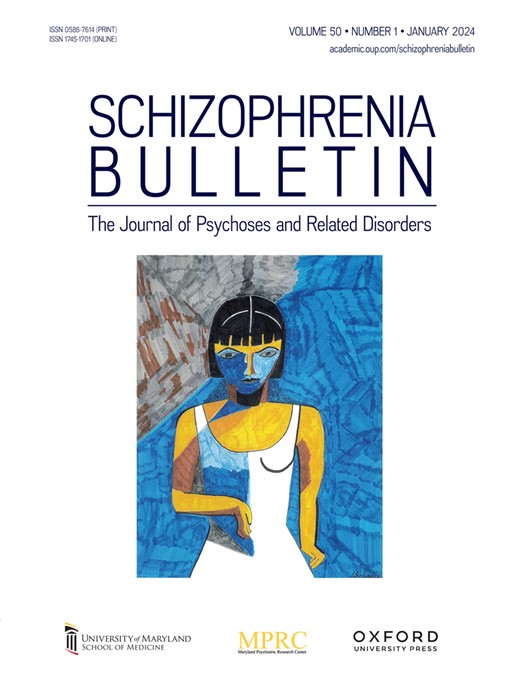4 THE IMPROVEMENT OF COGNITIVE FUNCTIONING IN PATIENTS WITH SCHIZOPHRENIA BY PSYCHOTHERAPY UNDER DANCE EDUCATION INTERVENTION
IF 5.3
1区 医学
Q1 PSYCHIATRY
引用次数: 0
Abstract
Background Schizophrenia is a serious mental illness characterized by thinking, perception, and emotional disorders. Patients generally have significant deficiencies in social functioning and cognitive abilities, with cognitive dysfunction being considered a core issue affecting their quality of life. Although traditional medication and psychological intervention can alleviate symptoms to some extent, their effectiveness in improving cognitive function is limited. In recent years, non-pharmacological intervention methods have gradually received attention, especially dance education. By combining physical movement, rhythm training, and emotional expression, it can not only promote the plasticity of brain cognitive function, but also provide patients with an educational and entertaining form of rehabilitation. Methods To systematically evaluate the improvement effect of dance education intervention combined with conventional psychotherapy on cognitive function in patients with schizophrenia, in order to provide new intervention strategies for clinical practice. The study recruited 62 patients who met the diagnostic criteria for schizophrenia as the research subjects. The research subjects were randomly divided into an experimental group and a control group, with 31 people in each group. The experimental group received a 12-week dance education intervention in addition to routine psychiatric treatment. The dance course design is guided by patient abilities and covers three modules: body coordination training, rhythm development, and emotional expression. It is conducted three times a week, each lasting 60 minutes. The control group only received routine psychiatric treatment without any additional activity arrangements. Before and after intervention, patients’ cognitive function was evaluated using the Montreal Cognitive Assessment (MoCA) and Wisconsin Card Sorting Test (WCST). Among them, MoCA is used to evaluate patients’ multidimensional cognitive abilities such as memory, attention, and executive function; WCST focuses on testing classification ability and cognitive flexibility. The data analysis was conducted using SPSS 26.0 software. Firstly, paired sample t-test is used to analyze the cognitive function changes of each group of patients before and after intervention, and then independent sample t-test is used to compare the improvement differences between the two groups. Results The research results showed that the total score of MoCA in the experimental group significantly increased after intervention, from 22.1±3.2 to 26.5±2.8 (P<0.01), with significant improvements in cognitive dimensions such as executive function, attention, and memory. However, the control group only showed slight improvements in some indicators, and the difference was not statistically significant (P>0.05). The WCST test results showed that the classification completion number of the experimental group significantly increased, from 3.4±1.2 to 5.1±1.3 (P<0.01), while the number of persistent errors significantly decreased, from 15.6 ± 4.5 to 11.2±3.8 (P<0.01). The changes in relevant indicators of the control group were not significant (P>0.05). Discussion The research results indicate that dance education intervention combined with psychotherapy has significant effects on improving cognitive function in patients with schizophrenia, especially in areas such as executive function and attention. Future research can combine personalized treatment to further improve intervention effectiveness, providing strong support for patients to return to society and improve their quality of life.求助全文
约1分钟内获得全文
求助全文
来源期刊

Schizophrenia Bulletin
医学-精神病学
CiteScore
11.40
自引率
6.10%
发文量
163
审稿时长
4-8 weeks
期刊介绍:
Schizophrenia Bulletin seeks to review recent developments and empirically based hypotheses regarding the etiology and treatment of schizophrenia. We view the field as broad and deep, and will publish new knowledge ranging from the molecular basis to social and cultural factors. We will give new emphasis to translational reports which simultaneously highlight basic neurobiological mechanisms and clinical manifestations. Some of the Bulletin content is invited as special features or manuscripts organized as a theme by special guest editors. Most pages of the Bulletin are devoted to unsolicited manuscripts of high quality that report original data or where we can provide a special venue for a major study or workshop report. Supplement issues are sometimes provided for manuscripts reporting from a recent conference.
 求助内容:
求助内容: 应助结果提醒方式:
应助结果提醒方式:


